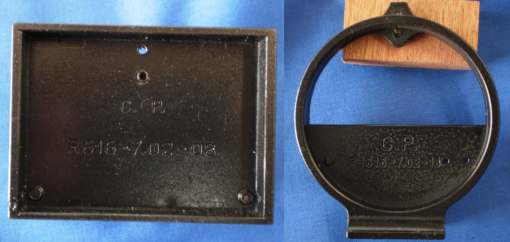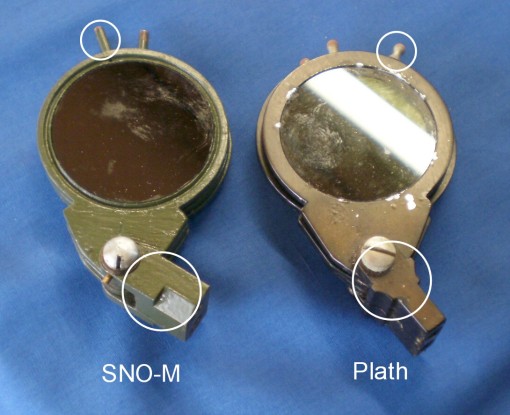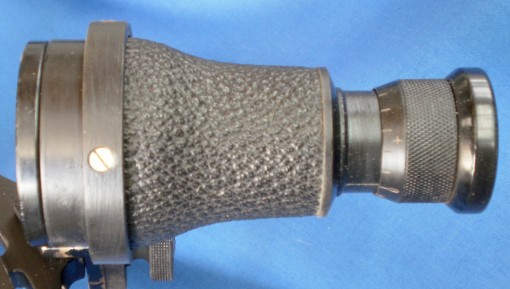Various properties of light have been utilised in sextant shades or light-reducing filters. In about 1938, the property of polarisation was applied to sextant shades. Light waves are longitudinal waves, the sort one sees when waving a rope, and as they are electromagnetic waves, the electrical and magnetic waves are in planes at right angles to each other. By convention, when talking about the plane of polarisation of light, it is the electrical wave that is referred to. For practical purposes, direct sunlight can be thought of as being polarised in all possible directions.
In the late 1920’s Edwin Land invented a film that would select one plane of polarisation of light and in a perfect film, 50 percent of the light would get through. If another sheet is placed behind the first, with its plane of polarisation at 45 degrees to the first, it is found that half of the remaining light gets through. If the sheets are “crossed” at 90 degrees, in theory, but not quite in practice, no light gets through. The intensity of the light passing through is governed by the equation: Intensity out=Intensity in x 1/2 cos² θ, where θ is the angle of crossing, and since the cosine of 90 degrees is zero, no light gets through.
Since the films are not perfect, in fact about 38 percent of the light gets through a single filter and about 0.02 percent through filters crossed at 90 degrees. When looking at the full sun through crossed filters, the sun is seen as a white disc with a bluish tinge. A pair of uncrossed filters pass about 20 percent of the light, but the human eye can just detect a halving of light intensity, so in practice the loss of light does not seem to be very great.
There are two practical realisations of polarising filters to the sextant. In the most common, one film of polaroid is applied to a fixed glass and the other to one that can rotate in the mounting that houses the fixed film. For the index shade, which has to cope with the sun, one of the films is applied to a glass that is already a moderately dark neutral grey, but both horizon glasses are clear. Just as for ordinary shades, both index and horizon shades can be swung in and out of the light path as required. Figure 1 shows the general arrangement.
The other realisation has only one polarising glass each for the index and horizon shades and two detachable polarising eyepiece shades, one dark and one clear. It was probably cheaper to make, as will be seen from the details of the practical standard arrangment.
In this, the mounting for one glass nestles within the other and can rotate through limits set by two stops as shown in Figure 2, which is of an index shade.
The inner mounting, of the darker glass in this case, has a groove turned in its periphery to accommodate a pair of brass shoes, and these shoes are anchored by two screws that pass through the outer mounting (Figure 3), so that when in place, the inner mounting can rotate but not be withdrawn from the outer.
The glasses themselves are retained in the mountings by threaded brass mounting rings, visible in Figure 1. Broken polarising glasses can be replaced – for about US$35 each. A cheaper option is to replace a broken glass with plain glass to which a sheet of self-adhesive polarising film has been attached. As the sheet is of uniform thickness, prismacity does not seem to be a problem, and for those who have broken ordinary neutral density shades for which they cannot find replacement, one option is to apply a sheet of film to each side of a plain glass disc, crossed at an angle to give the desired darkness.















You must be logged in to post a comment.